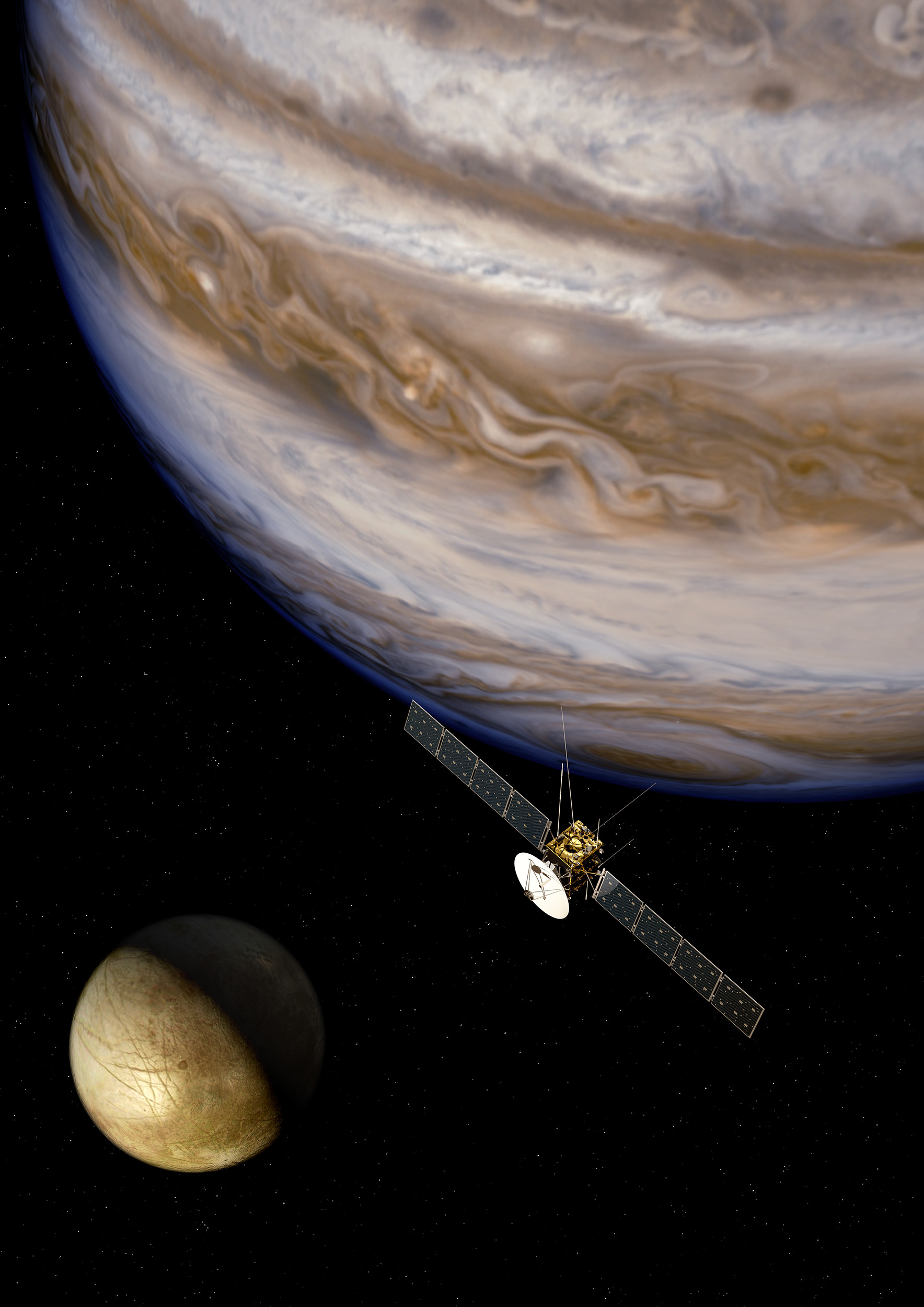Daily Image
26-03-2013To the Jovian Moons, with PRIDE.
| Submitter: | Leonid Gurvits |
| Description: | On 21 February 2013, ESA has announced the outcome of a lengthy selection process for the science composition of its flagship JUpiter ICy moons Explorer mission, JUICE http://www.esa.int/Our_Activities/Space_Science/ESA_chooses_instruments_for_its_Jupiter_icy_moons_explorer ). Among the lucky eleven winnersť is the Planetary Radio Interferometry and Doppler Experiment (PRIDE) led by JIVE. The JUICE mission, the first Large-class mission in ESA's Cosmic Vision 2015-2025 programme is scheduled to blast-off toward Jovian system in 2022 and reach the destination around 2030. At the vicinity of Jupiter the mission will conduct detailed studies of the physical environment of the largest planet of the Solar System and investigations of the three Galilean moons, Ganymede, Europa and Calisto. One of the most intriguing parts of the mission is an attempt to find large undersurface bodies of water in Ganymede and Europa. Water means life. It is not unthinkable that if liquid water is present on the Jovian moons, traces of life, past or present, could be detected too. PRIDE, based to great extent on VLBI technologies, is a multidisciplinary component of the JUICE science suite. Its prime deliverable, a highly accurate determination of the spacecraft state vectors will be used for a variety of applications, ranging from gravimetry to geodynamics to fundamental physics. In particular, PRIDE measurements will be involved in the monitoring of Ganymede's and Europa's tidal deformations, a key technique for liquid water search. PRIDE-JUICE is a direct descendant of the Huygens VLBI tracking experiment conducted under the JIVE's leadership in 2005. At the current stage of the project, in addition to JIVE, the PRIDE-JUICE team includes scientists from Belgium, France, Germany, Hungary, the Netherlands (TU Delft), Romania and the USA. But the team is likely to grow, not least via very natural involvement of EVN institutes. An important role in triggering the PRIDE-JUICE activities was performed by the EC FP7 projects EuroPlaNet and ESPaCE. Is 17 years too a long waiting period for such an exciting endeavour as in-situ studies of the celestial bodies that have marked the beginning of modern astronomy some four centuries ago? There might be many answers on this rhetoric question. Readers are invited to find their own one. |
| Copyright: | Picture credit: European Space Agency |
| Tweet |  |
